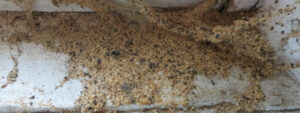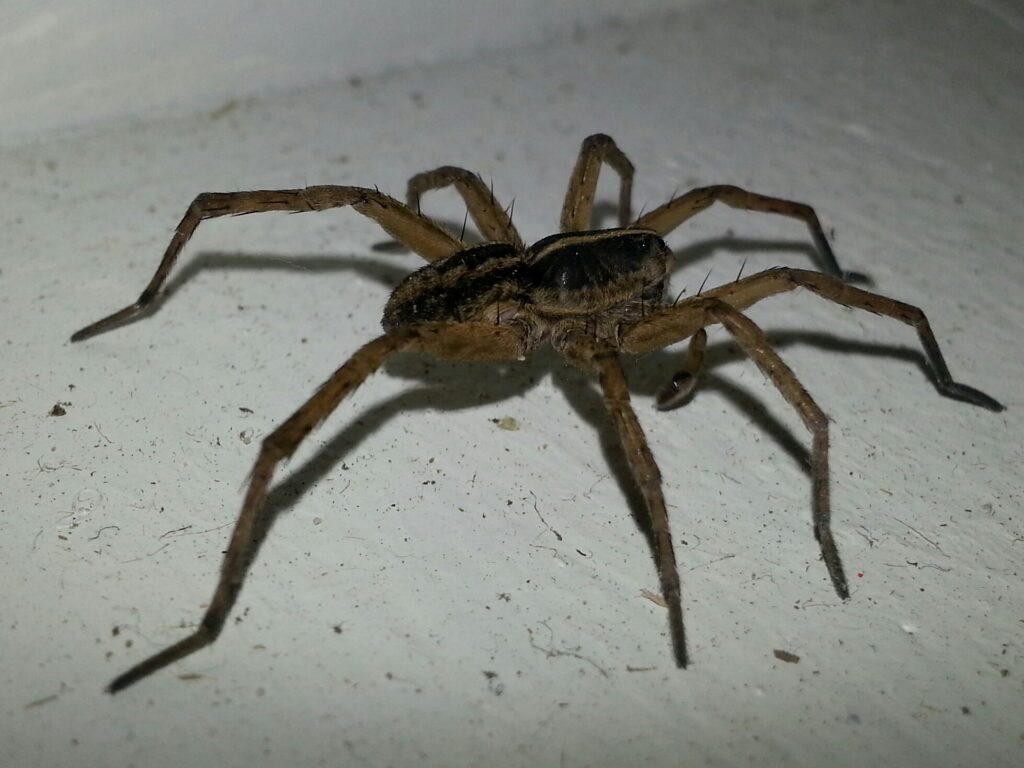 Today, we'll talk about the top three troublemakers that love to mess with wood, starting with those sneaky carpenter ants. These little guys are pretty interesting, and knowing more about them could save you a ton of trouble and cash down the line. We're here to help you spot the early warning signs of an unwelcome visit.
Living in wood, these insects can cause quite a mess without you even knowing it. Spotting them isn't just about looking but understanding their signals.
As we go along, we'll explore the signs that point to a carpenter ant invasion and help you find their hideout - the nest. We'll also cover the aftermath of an ant takeover and share our top 5 tactics to outsmart and outmaneuver these pests before they take control.
Lastly, we'll explain why our experts are the best in the business when it comes to getting rid of carpenter ants.
Today, we'll talk about the top three troublemakers that love to mess with wood, starting with those sneaky carpenter ants. These little guys are pretty interesting, and knowing more about them could save you a ton of trouble and cash down the line. We're here to help you spot the early warning signs of an unwelcome visit.
Living in wood, these insects can cause quite a mess without you even knowing it. Spotting them isn't just about looking but understanding their signals.
As we go along, we'll explore the signs that point to a carpenter ant invasion and help you find their hideout - the nest. We'll also cover the aftermath of an ant takeover and share our top 5 tactics to outsmart and outmaneuver these pests before they take control.
Lastly, we'll explain why our experts are the best in the business when it comes to getting rid of carpenter ants.
Top 3 Wood-Destroying Insects that You Should Know?
Your home could be under threat from pests you might not still be aware of. These threats often come in tiny packages, causing significant damage over time. The culprits are wood-destroying insects, and it's high time you learn about them. Understanding these tiny invaders can save you significant repair bills and keep your home safe and intact.- Powderpost Beetles: These tiny insects are often mistaken for fleas due to their small size. However, their impact is much larger, causing severe harm to any wooden structures in your home. Their name comes from the fact that they turn wood into a fine, flour-like powder, causing weakening over time.
- Deathwatch Beetles: Don't be misled by their ominous name; these insects pose no threat to human health. But they can cause significant damage to old and damp wooden structures by boring into them and developing their colonies.
- Carpenter Ants: These brawny builders, known as carpenter ants, tend to hollow out wood to build their nests. While they don't feed on the wood like termites, their nesting habits can cause severe structural damage to your home.
What are the Key Signs of a Carpenter Ant Infestation?
Your home, a place of tranquillity and peace, can unfortunately also host uninvited guests. Wood-boring creatures such as carpenter ants can pose a significant issue, and knowing the indicators is the first step in tackling an infestation. So, what are some signs of pests?- Frass: Also known as insect dust, frass is a mixture of wood particles and ant waste. If you notice a pile of this powdery substance near your panels or furniture, it often signals an infestation.
- Noises: These ants can be quite vocal, producing a rustling sound, which is noticeable in quiet conditions.
- Carpenter Ant Sightings: If you spot large, black ants in your house and especially around wooden structures, it's likely a colony has taken up residence.
- Swarmers: Ant Swarms in or around your home indicate a mature colony nearby. Swarmers, or winged ants, either start new colonies or expand existing ones.
- Damaged Wood: Unlike termites, carpenter ants do not consume wood but excavate it to build their nests. Look for smooth, clean galleries and holes in wooden structures for signs of these lumber insects.

How Can You Locate a Carpenter Ant Nest in Your Home?
Identifying the location of a carpenter ant nest is critical for ensuring the integrity of your home's wooden structures and maintaining a healthy living environment. However, locating these nests poses a considerable challenge due to the discreet nature of these insects and their nesting habits. To effectively find a carpenter ant nest, consider the following strategies: Firstly, keep an eye out for "frass," a sawdust-like material that carpenter ants leave behind as they tunnel through wood. The presence of frass in areas around your home may indicate the proximity of a nest. Secondly, since carpenter ants prefer humid environments, inspect areas known for moisture accumulation or leakage, such as bathrooms, kitchens, and basements. Thirdly, listen for faint rustling sounds within walls or wooden structures, which could signal the activity of a colony. Lastly, observing the movement patterns of worker ants might lead you to the heart of the infestation, though this approach should be undertaken cautiously to avoid scattering the ants or prompting them to relocate their nest. Our experts in carpenter ant eradication advise taking careful measures when attempting to locate a nest, including using proper protective gear and tools. Identifying a nest requires diligence and patience. Upon discovering a carpenter ant colony, it's prudent to seek professional assistance to address the issue safely and efficiently, leveraging the expertise of specialists in pest control.Long-Term Effects of an Untreated Carpenter Ant Infestation
When we talk about home health hazards, the subtle impact of pest intrusion often goes unmentioned. Alas, failure to promptly handle an unwelcome invasion of carpenter ants can have damaging long-term effects.- Structural Degradation: Carpenter ants are notorious for their role in compromising the structural integrity of a home. They begin by tunneling through moist, decayed wood, then progress into undamaged materials, causing extensive damage over time.
- Fungal Attack: Some types of wood-loving fungi can accompany these intruders, causing additional harm to your dwelling by weakening the timber from within.
- Aesthetic Decline: Ants don't just damage the structural elements of your home; they can also mar the appearance with their excavation activities. Feather-like wood fragments near constructions and sawdust-like material are a common sight indicating a serious threat.
Benefits of Hiring Our Pest Control Experts for Carpenter Ant Removal and Prevention?
Engaging the services our skilled team provides is crucial when dealing with pesky invaders causing damage to your home. Here are some reasons why enlisting our services might prove to be a game-changer:- Experienced Professionals: Our crew comes prepared with years of experience in identifying invaders and formulating effective plans for their removal.
- Preventive Actions: We’re not only focused on ant extermination but also on preventing future outbreaks. By isolating potential sources, we minimize future risks.
- Time-Efficient: Time is of the essence when battling housing damage caused by these destructive creatures. Our crew provides fast solutions to halt further damage.
- Safe Practices: The use of harmful pesticides can pose risks to your family and pets. Our team ensures minimal use of chemicals, prioritizing safe extermination techniques.
- Comprehensive Service: Our service includes a thorough inspection of your property, an effective extermination, and timely follow-ups to assure complete success.

